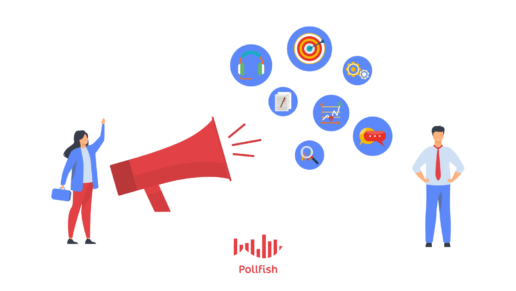Diving Into Longitudinal Surveys
Diving Into Longitudinal Surveys

Longitudinal surveys are the most powerful assets that marketers and market researchers can use when conducting longitudinal research.
We’ve previously highlighted the three main types of survey research methods, which include cross-sectional studies, longitudinal studies and retrospective studies. In this article, we will cover longitudinal surveys and their underlying studies.
You can apply longitudinal studies for a wide range of verticals and purposes. As such, it is crucial to learn about this research method so that you can set it off smoothly for your survey research needs.
Defining Longitudinal Surveys
A longitudinal study is defined as a study in which researchers gather data on the same set of variables (respondents) over a period of time. This kind of research grants researchers the ability to closely examine the trajectories and changes of their subjects over time.
This study includes gathering insights on the sample pool’s opinions, behaviors, sentiments, desires, reactions and several other aspects. Mostly used in medical and social sciences, this form of research is also invaluable for brands, as studying your target market is key to keeping your business alive.
A form of correlational research, researchers (and businesses) conduct longitudinal research via collecting data on a group of variables without influencing or affecting the variables in any way. Each data collection is called a wave.
It is optimal to conduct this kind of study via longitudinal surveys, as they are designed to garner all the questions you need and to create them in innovative ways.
The Key Aspects of Longitudinal Surveys
To fully understand longitudinal surveys, you should peruse some of their key features. This will help you understand their make up and decide whether to use them for your survey research.
The following lists the core facets that distinguish these surveys from that of others. Here is how they differ aside from their deployment frequency:
- These studies and their surveys gather insights over long-term periods.
- Despite being typically used for a long period of time, there is no fixed amount of time required to constitute a longitudinal study.
- These studies can range from several weeks to years and even decades.
- They are part of observational studies, in which no intervention takes place, only pure investigation.
- They involve repeated observations of the same group of participants.
- They are used to uncover relationships between variables that are not connected to background variables.
- They are used to discover how the sampling pool (respondents) changes over time.
- They are used after extracting some findings from cross-sectional studies, when those studies warrant more data and inquiry.
- They collect both quantitative and qualitative data.
- They can be conducted through primary research, along with secondary research.
- Primary sources: surveys, survey panels, interviews, focus groups
- Secondary sources: government websites, focused reports, ex: longitudinal studies on American youth
How They Differ from Cross-Sectional & Retrospective Surveys
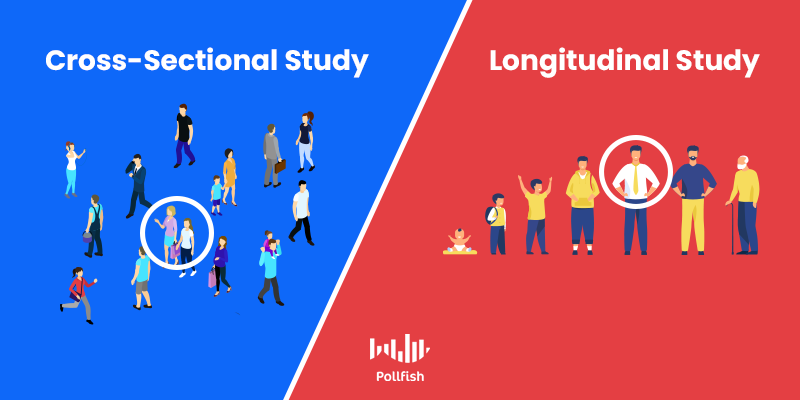
Longitudinal studies are often contrasted with cross-sectional studies. They also differ from retrospective studies. The survey of each study follows suit, as it will be distinguished in design, function and deployment frequency.
Unlike longitudinal studies, cross-sectional studies involve examining samples of a given population (the cross-section) at a particular point in time. The surveys in this research method paint a snapshot of a sampling pool, usually the prevailing one.
As such, cross-sectional studies are far shorter to conduct. They are often used as precursors to longitudinal studies, in that they discover correlations that can be further probed longitudinally.
Retrospective studies combine aspects of both cross-sectional and longitudinal studies. They study respondents with surveys about past events. Researchers can thus compare past feelings and attitudes with those of the present, much like in longitudinal studies. In this way, these studies are used hand in hand with longitudinal studies, despite that retrospective studies form their own distinct set of research.
Retrospective surveys can be conducted just once, as are cross-sectional surveys. They may also amass data on several points in time. These surveys draw from a pool of an already existing data set.
As such, retrospective studies only deal with events of the past and will not gather any new data; that’s where longitudinal studies are needed to be used in tandem with them.
It’s important to note that all three of these research methods/survey types are observational, allowing researchers to record and understand the subjects’ behaviors via observation only.
The 3 Types of Longitudinal Surveys
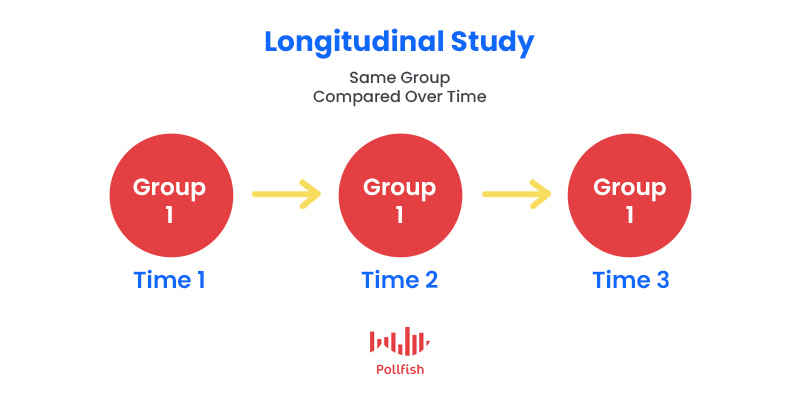
Longitudinal studies can be carried out in various ways. There are three main classifications of longitudinal surveys: a panel study, a cohort study and a retrospective study. As mentioned above, retrospective studies make up their own major form of research. However, due to their close involvement with longitudinal studies, they can also exist as a form of these studies.
Panel study:
- It involves sampling a prerecruited set of survey respondents.
- These respondents agree to a particular length of participation.
- Surveys are sent to the exact same group of respondents.
Cohort study:
- It is conducted through online survey software.
- Respondent selection is set by way of shared characteristics, such as a geographical location, births and historical experiences.
- It also deals with respondents on the basis of demographics and opinions and behaviors (the latter two are collected via screening questions).
Retrospective study:
- It uses past information on the same or similar subjects (variables).
- It involves studying the past with recorded data. Ex: medical records, past surveys.
- It complements any current or soon-to-be gathered longitudinal data.
The first two types of surveys are part of prospective longitudinal research, in which a sampling pool is studied over a period of time. They therefore fall opposite to retrospective studies.
Which Industries Depend on these Surveys for Market Research
There are several industries that utilize longitudinal surveys for market research undertakings. These surveys, therefore, provide a wide variety of applications. The following list details the various verticals that rely on longitudinal surveys.
- Healthcare: Physicians, other healthcare providers and researchers can study any biological change in participants in terms of their lifestyle, i.e., their diets, their fitness/ sedentary habits, health upkeep, reactions to medicines and much more.
- Retail: Retailers can study shopping habits from time to time and discover how advancements in the sectors affect those habits or form new ones.
- Psychology: Psychologists can conduct these surveys to study how the mentality and psyche of various groups change over time in reaction to stimuli or any change.
- Education: Those in the education sector can use students' test scores, work and products to track developments over time. Monitoring student progress can also identify disparities in academic performance levels among students.
- Real estate: Real estate agents and business owners can use these surveys to gather opinions of residents and businesses within a neighborhood or property over time.
- Technology: Tech leaders and manufacturers can learn how consumers change or develop certain behaviors due to the use of existing technology or the emergence of new kinds.
- General business: Brands can conduct these surveys to closely monitor their target market, especially in relation to their products. Additionally, businesses can study closely associated target markets or even different knees to gain new patrons.
Types of Business Surveys that Rely on Longitudinal Studies
Dovetailing onto the final industry using longitudinal data, that of general business, it is crucial to understand just the kinds of surveys that brands can use. This is because a wide array of survey types (based on the subdisciplines of business) can be applied in longitudinal studies. Here are a few key survey types:
- Marketing market research: Brands can use marketing surveys for market research to study trends in the market and within niches firsthand. They can also help businesses capture demand for their product/service, along with measuring campaign success.
- Customer Satisfaction: A major component of any business, there are a variety of surveys for this purpose, such as the Net Promoter Score (NPS), Customer Satisfaction Score (CSAT) and the Customer Effort Score (CES).
- Product feedback: These surveys provide necessary insight into the sentiment around product launches or existing products, should you want to test their levels of customer contentment. You can test for usability, awareness and general opinions on your products via longitudinal feedback.
- Employee engagement: Not all survey research is external, not even when it comes to the longitudinal variety. As such, it is apt for businesses to keep an eye on their employee engagement levels. This involves checking on employees’ comfort on the job and collaboration with others. A longitudinal survey on employee engagement will give you the full scope of your company’s pulse and how to improve it.
The Pros and Cons of Longitudinal Surveys
Longitudinal studies, like others, come with their own sets of benefits and stumbling blocks. You ought to consider both sides in order to get the full picture on this kind of research method. Understanding the pros and cons will help you determine whether it is worth using this kind of study and its accompanying survey(s). It will also keep you aware of what to expect.
Pros
- Longitudinal surveys allow you to monitor your target market and general sampling pool in real time. This allows you to place all insights sequentially and be able to correlate events with causes.
- This is the only study that gives you access into observing developments and life-spanning issues.
- These surveys allow you to study hypotheses conjectured at cross-sectional surveys to learn more and form educated decisions.
- This is the most optimal study for identifying causal relationships and cause and effect.
- It stamps out the risk of recall bias, which denotes the inability to remember past occurrences.
- It can be used within a variety of survey types and industries including ones not mentioned above such as advertising, community feedback and more.
- They allow you to discover which sentiments and behaviors are conditional and which withstand the test of time.
Cons
- These are the most time-consuming surveys; they may not work alongside other surveys since they’re results aren’t complete until the end of the studied period.
- They require the most resources and are the most expensive kind of survey to conduct.
- Respondents may drop off over time, as not all are going to be as committed to the study. This is known as selective attrition.
Beyond Market Research: Longitudinal Studies as Content Assets
Longitudinal studies take the most amount of dedication and commitment — both on the end of the researchers and respondents due to their time-consuming nature. Nonetheless, they are valuable sources of primary research.
For businesses, these kinds of surveys do far more than just provide firsthand insights and data. Marketing teams can delight in that conducting longitudinal studies provides an invaluable content marketing asset, the kind that will easily distinguish a brand from its competitors.
Many businesses rely on content to increase brand awareness and gain leads. In fact, 60% of marketers produce one piece of content per day to grow their business. There are brands that use it to boost their user experience (UX) and even retain their customers. While blogs and social posts are typical, a longitudinal study is a downloadable asset worth conducting. It may be enlightening enough to gain media attention.
Frequently asked questions
What are the three main types of survey research methods?
The three main types of survey research methods are longitudinal studies, cross-sectional studies, and retrospective studies.
Why are longitudinal surveys performed?
A longitudinal survey is one that is created in order to gather data from respondents over a period of time. Surveys are distributed multiple times to the same group of respondents in order to study how specific variables change over time.
Why are longitudinal surveys performed?
The purpose of a longitudinal survey is to understand how a group’s behaviors, opinions, feelings, needs, and desires change over a period of time.
How does a longitudinal study differ from a cross-sectional study?
Cross-sectional studies provide a snapshot of the sample pool at a specific point in time, while longitudinal studies provide many snapshots of the sample pool at specific points over a period of time.
What are the three types of longitudinal studies?
The three types of longitudinal studies are panel studies, cohort studies, and retrospective studies.
Excelling in Survey Research with the Quantitative Survey
Excelling in Survey Research with the Quantitative Survey
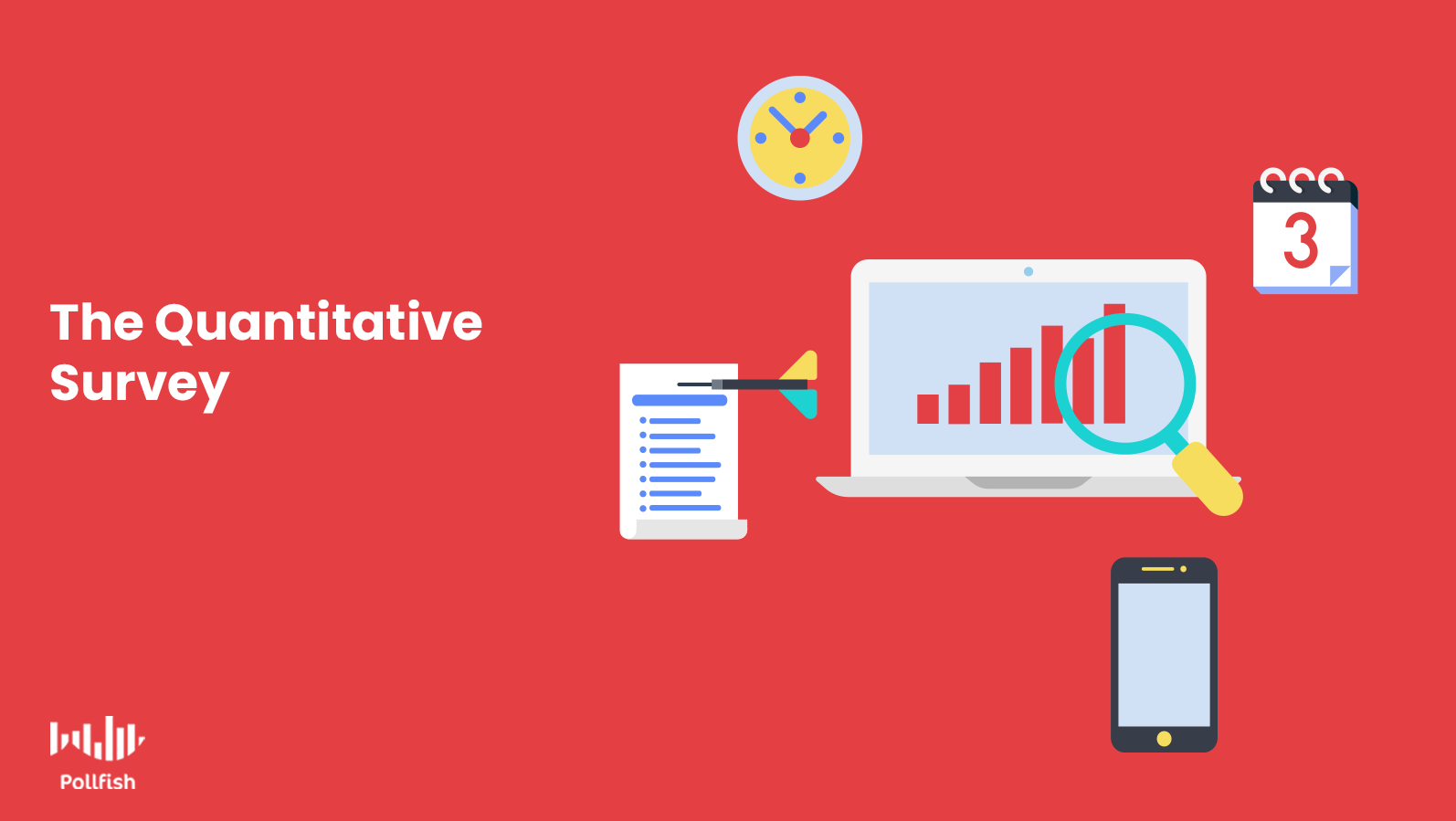
A quantitative survey provides researchers with data that is quantifiable in nature, making this type of survey an important component of any research project. In a quantitative survey, numeric values are assigned to the answers so researchers can objectively measure and compare survey data.
A quantitative survey produces the type of data that many of us associate with surveys. This type of data is easily converted into objective, numerical results that can be viewed in tables and charts to provide a clearer picture.
In “The Complete Guide to Quantitative Market Research,” we covered the types of quantitative research methods that are used to drive market research. In this article, we will focus specifically on how you can use a quantitative survey to gather numerical data to drive your research project.
Defining the Quantitative Survey
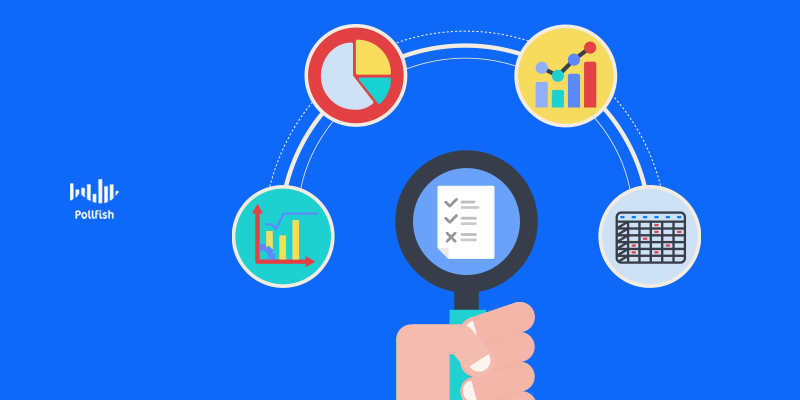
In a quantitative survey, data is obtained by asking respondents objective, close-ended questions. Each question has a predefined list of answers. The responses are then used to compile numerical data that you can analyze via tables, charts, and graphs.
Quantitative survey questions are used to gain insights about ratings, pricing, frequency, and likelihood. They are often used to understand the relationship between attitudes and consumer behavior. The responses for quantitative survey questions include binary, multiple-choice, and scaled responses.
One of the main ways that a quantitative survey differs from a qualitative survey in that it asks “who” and “what,” while qualitative questions ask “why,” in order to understand the motivation behind actions, thoughts, or feelings. Qualitative questions are commonly used to gain context or gather information about attitudes, lifestyle choices, and issues. The responses for qualitative questions involve both open-ended and multiple-choice questions.
The Pros and Cons of Quantitative Surveys
In order to understand when to use quantitative surveys, you must first understand the pros and cons of this type of survey.
The Pros:
- The data from quantitative surveys is usually easy to collect and analyze.
- The simple format of quantitative surveys allows researchers to distribute them more broadly and reach a larger audience.
- Without open-ended questions, quantitative surveys are usually faster to complete, which can improve the response rate.
- Quantitative surveys are useful when researching sensitive subjects because they can allow the respondent to remain completely anonymous, without the need to contribute any personal or identifiable information.
- Quantitative surveys are more mobile-friendly than qualitative survey questions because the respondent does not need to type out lengthy answers.
The Cons:
- Quantitative surveys do not allow researchers to probe for deeper or unique answers to survey questions.
- The results of quantitative surveys can be misleading. Despite the seemingly objective nature of quantitative surveys, researchers can interpret the data based on their own views and then state conclusions in a way that sounds factual since they are based on numbers.
- Since quantitative survey questions have predefined responses, there is no opportunity for a respondent to volunteer unexpected information.
- It can take longer to plan a good quantitative survey that will collect the data needed to understand relationships or behavior.
- Survey responses must be carefully considered so that respondents are able to select an answer they can relate to.
Creating a Survey with Quantitative Questions
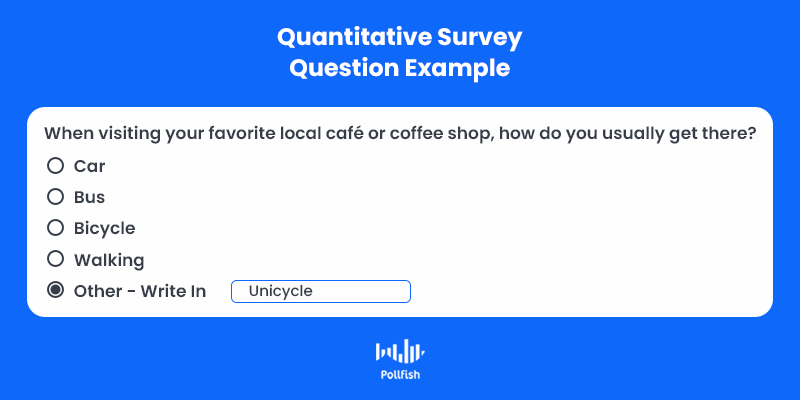
Quantitative survey questions will yield data that you can use to better understand your target market. The results can be compiled into a research report to provide statistical information and detailed insights. This information is typically used to understand prevalence and quantify phenomena, along with then being used to broaden research efforts and better understand the market as a whole.
In order to formulate the right type of questions, you first need to understand the goals of your research project. In quantitative research, researchers often start by stating the objective as a question and then designing survey questions to find the answer.
For example, a researcher might ask: “How do the study habits of college freshmen compare to the study habits of college seniors?” In order to answer this, the researcher would need to gather information about both college freshmen and college seniors in order to draw conclusions.
Remember: you need to create quantitative survey questions in a way that allows them to be translated into numerical data. This means that you will need specific, numerical answers to each question.
Quantitative questions frequently ask “how” or “what.” For example:
- What is/are…?
- How many…?
- How often...?
- What percentage…?
Below we provide some example questions that a researcher might ask in order to understand how study habits change throughout the course of a college education. For the purpose of this exercise, assume that the researcher has used pre-screening questions to sort the respondents into two groups - college freshman and college seniors who are attending a 4-year university for the first time.
Establish Demographics
In order to understand how demographic factors influence responses, you will need to gather some basic demographic information:
- What is your age? [Dropdown]
- What is your gender? [Multiple choice]
- How many years have you attended this college? [Dropdown]
- How many people in your immediate family (parents and siblings) have attended college? [Multiple choice]
- What is the highest level of education attained by either of your parents? [Multiple choice]
Understand Study Habits
The next part of your survey will focus on gathering data that you can use to describe the study habits of these two groups.
- How many hours per day do you study? [Multiple choice answer]
- How often do you attend a study group? [Multiple choice answer]
- How likely are you to join a study group for a class that you struggle with? [Multiple choice]
- How many study groups are you currently a member of? [Multiple choice]
- Which of the following study tools do you use and how often? [Matrix]
- How do you rate the following study tools? [Matrix]
Deeper Questions
Despite their objective nature, quantitative survey questions can help you understand how your respondents feel about their experiences, that is, it helps you quantify their feelings Here are some ways you can use quantitative questions to gain deeper insights:
- Please select how much you agree or disagree with the following statement: My current study habits are effective. [Likert scale]
- Please select how much you agree or disagree with the following statement: I know which study tools and methods are appropriate for each of the courses I’m taking [Likert scale]
- Please select how much you agree or disagree with the following statement: I think that I study more than other students in my year. [Likert scale]
Once you have your survey responses, you can begin to analyze the data. After this, you should have a general idea of the landscape of freshman and senior habits. This data can help you create a research report or lead to further surveys to further explore or better understand your findings.
Power Your Quantitative Survey with the Right Questions
Quantitative survey questions can power your research project by helping you gather and analyze large amounts of data with relative ease. This data can help you establish a good understanding of your subject matter and establish objectives for future research efforts. For this reason, most researchers include a large percentage of quantitative survey questions in their surveys.
Many surveys contain a mix of quantitative and qualitative questions, with quantitative questions forming the bulk of the survey. This is helpful because quantitative questions allow researchers to easily analyze and define findings, while qualitative questions can reveal deeper insights, contextual information, and unexpected findings.
Gain further insights by pairing some of your quantitative survey questions with a few, carefully chosen qualitative questions. By pairing questions in this way, you get the best of both worlds — numerical data that is ready for analysis and the potential for new discoveries by way of personalized responses.
Frequently asked questions
What is a quantitative survey?
A quantitative survey is one that asks close-ended questions that can be assigned a numerical value in order to allow for analysis via tables and graphs.
How does a quantitative survey differ from a qualitative survey?
Quantitative surveys seek to answer questions about “who” and “what,” why qualitative surveys are concerned with understanding “why.” Quantitative surveys do not have open-ended responses, while qualitative surveys can have a mix of multiple-choice and open-ended.
What are some of the benefits of quantitative surveys?
Quantitative surveys are easier to distribute to a large audience, allow for easier data collection and analysis, and tend to have a higher response rate since they are faster to complete.
What are some of the drawbacks of quantitative surveys?
Some of the limitations of quantitative surveys include the potential to misinterpret results and that they provide little opportunity to receive unexpected answers. It can also be challenging to design a good quantitative survey since the answers are defined rather than open-ended.
What is the benefit of including a mix of quantitative and qualitative questions?
Many surveys contain a mix of quantitative and qualitative questions because it provides researchers with plenty of numerical data to analyze, while also providing the potential to dig deeper and get some unexpected responses.
Diving Into the Customer Loyalty Survey for Business Growth
Diving Into the Customer Loyalty Survey for Business Growth
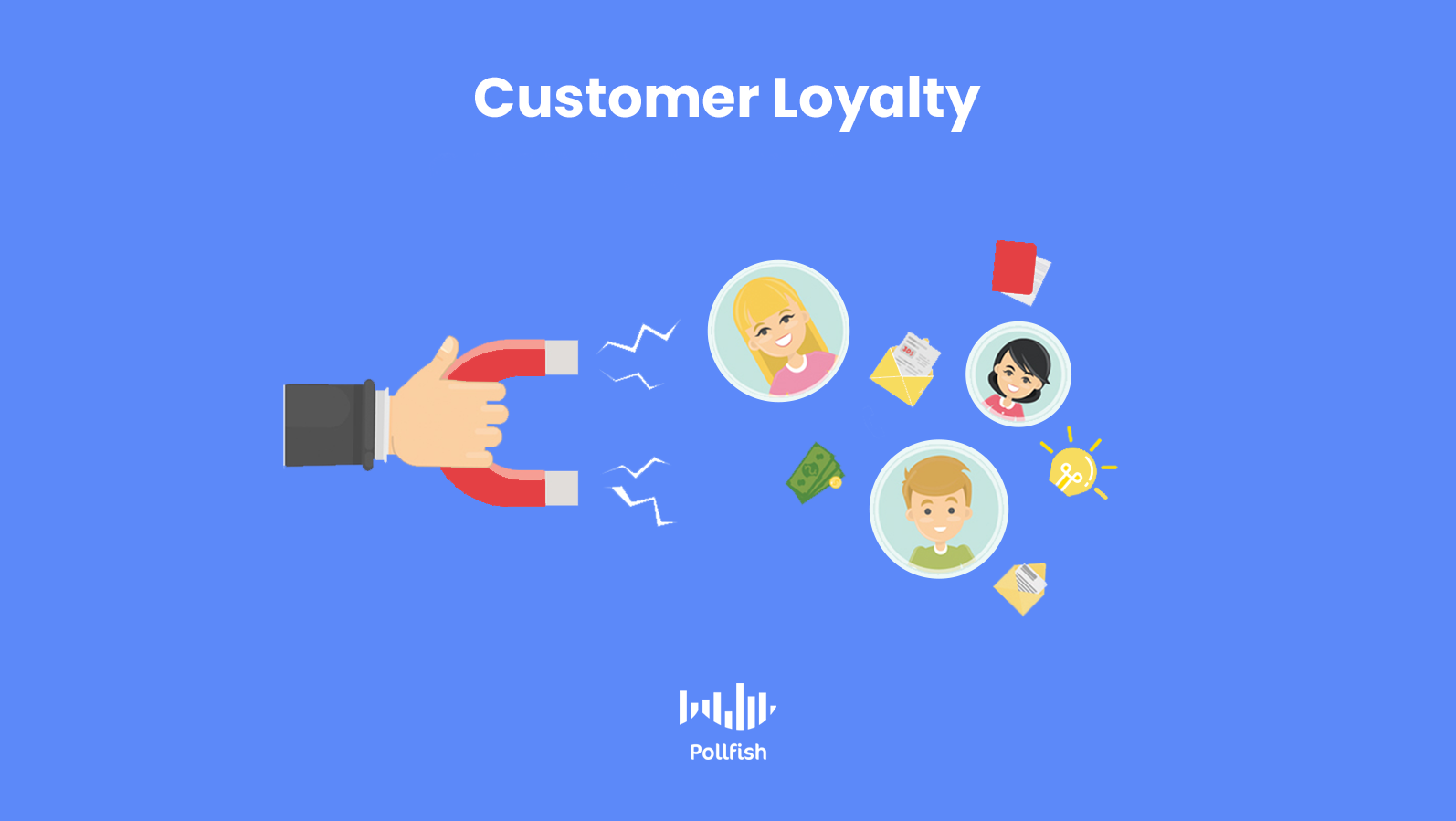
There is nothing quite as sought after in the business world as customer loyalty. A customer loyalty survey can help businesses achieve this lofty end.
There is more to customer loyalty than just returning customers, as this concept goes beyond customer retention. Thus, customer loyalty also has its own methods of measurement and attainment.
This article presents a deep dive into the customer loyalty survey, not simply shedding light on its particulars, but how it can help you grow your business by creating customer loyalty within your target market.
Defining Customer Loyalty
Before jumping into the customer loyalty survey, let us cover its underlying theme of customer loyalty. This term is used to describe an ongoing business relationship in which customers consistently choose a company’s product/ service over that of its competitors.
This concept is the driving force behind repeat purchases from customers, even in a competitive market, i.e., one in which competitors offer similar price points, promotions and experiences.
Customer loyalty is not merely customer retention; rather it is the most powerful form of it, as it signifies the segment in your target market that exhibits loyalty to your brand. That means that this group of customers provides more than just a few occasional buys from your business.
Rather, these consumers have a more personal connection to your brand, a tie that keeps them returning to your business on a regular basis. This is established by way of building a promising reputation or having impacted your customers in a considerable fashion.
This is to say that loyalty takes several factors to build — it cannot be achieved by one good customer experience. That is because the nature of loyalty is ongoing, so while you may have provided one positive experience, it is not guaranteed to retain your customers, let alone build a sense of trust, which breeds loyalty.
Why are Consumers Loyal to a Brand?
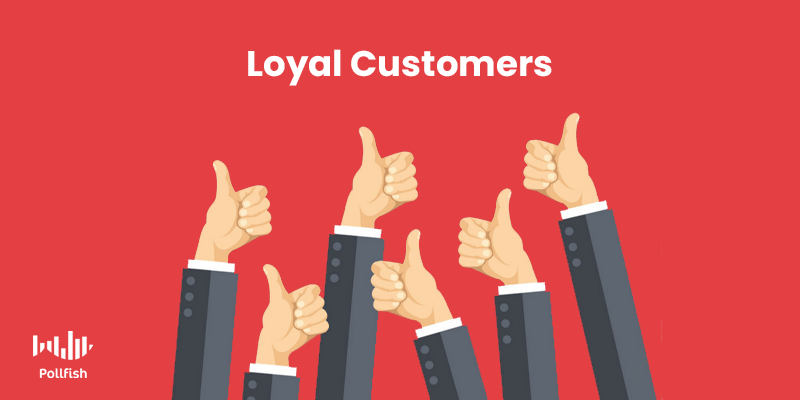
From the above section, we can deduce that loyalty comes from a brand’s environment. This environment has to provide multiple points of customer satisfaction.
This multi-faceted approach can help build customer loyalty over time. Here are a few concrete reasons as to why consumers are loyal to a brand:
- They associate it with positive experiences, such as online experiences, interactions on digital, phone or brick and mortar channels with brand representatives.
- They feel that they are getting something of quality from your brand in particular.
- The price ranges, discounts and promotions fit within their budgets and lifestyles.
- Customers feel connected to a brand due to its values and associations.
- Customers are intrigued by the content a brand provides as an auxiliary, whether it is on social media, websites or video content.
Why Your Business Needs Customer Loyalty
Your business needs to establish at least some degree of customer loyalty within your existing customers. Loyal customers can help your brand stay afloat even in times of crisis.
In fact, a negative experience can be a covert blessing — if you correct an issue a customer has, it reinforces the positive nature of your brand and customer experience (CX). Thus, it will strengthen your brand’s relationship with customers, paving the way to loyalty.
Here are the key reasons as to why your business needs customer loyalty:
- It represents a steady pool of income as opposed to one-off purchases.
- It prevents existing customers from leaving your brand, either by way of website bounces, not completing a site purchase, doing window shopping or turning to competitors.
- Customer acquisition is more expensive than customer retention.
- A 5% increase in retention may lead to a profit increase of up to 95%.
- It is easier to cross-sell and up-sell to existing customers than new ones. (A brand is 60-70% likely to sell to existing customers and only 20% to new customers).
- Loyal customers are more likely to recommend your brand, taking on a crucial marketing effort themselves.
- Loyal customers tend to spend more on a brand than first-time customers.
There are several other benefits that conjure up the need to attain customer loyalty. The above lists only a handful of chief reasons.
How to Measure Customer Loyalty
The most effective way to measure customer loyalty is via the customer loyalty survey, a type of survey specifically designed to gauge the degree of loyalty (or lack thereof) customers harbor for your business.
The true value of a customer loyalty survey is that it can take up a variety of formats, all while allowing you to ask all the questions you need.
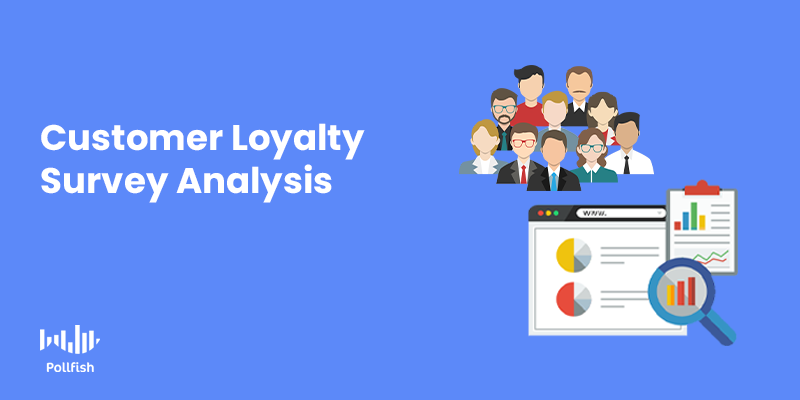
The following list enumerates how to measure customer loyalty. Although some of the following items exist as measurements, they can also be used as surveys themselves.
- Customer Lifetime Value (CVL): The measurement of how much value a customer will add to your company during their lifetime. The longer a customer makes purchases from a business, the greater their CVL becomes.
- To calculate: Multiply customer value by the average customer lifespan to get the approximate value you can expect from an average customer during the course of their business relationship with you.
- Repeat Purchase Rate: The percentage of your entire customer base that partakes in repeat business with a company. Also called the repeat customer rate, reorder rate, or customer retention rate, it falls between 0% to 100%.
- To calculate: Divide the purchases from repeat customers by all the buys on a site during a given date range.
- Net Promoter Score (NPS): This is a type of customer loyalty survey, also useful for measuring customer satisfaction. This score-based survey shows how likely customers are to recommend your brand or offerings. It asks respondents to rate their likelihood of recommending you on a scale of 1-10. (1-6 range = detractors, 7-8 range = passives & 9-10 range = promoters).
- To calculate: Subtract the total number of detractors from the total number of promoters to determine how many people are likely to recommend you. ‘
- Customer Loyalty Index (CLI): A standardized customer loyalty survey used to monitor customer loyalty over time. It relies on multiple factors like the NPS, upsells, and repeat purchases.
- It achieves this via three core questions: How likely are you to recommend us to your friends and family? How likely are you to buy from us again in the future? How likely are you to try our other products?
- To calculate: Find the average of the 3 responses, with each response range being that of 1-6; 1 is a strong yes while 6 is a strong no.
How to Create a Customer Loyalty Survey
You can create a customer loyalty survey in a number of manners and styles. If you want to use the NPS score, create an NPS survey. If you prefer the Customer Loyalty Index, then use its model in your survey.
But if you are considering creating a general customer loyalty survey, consider the following:
- Firstly, you should target your customers only.
- Filter the survey so that only existing customers qualify as respondents by way of your demographics and screening questions.
- You can hasten the amount of time it takes to reach a certain amount of respondents by sending customers a survey after they made a transaction, that way you’ll know that they are indeed customers.
- Then, in the questionnaire section of the survey, add questions that focus on customer loyalty and its subtopics.
The following gives several examples of the types of questions to incorporate in your customer loyalty survey.
General Customer Loyalty Questions
- Do you trust [name of brand] when it comes to [industry needs, specifics]?
- Do you consider [brand] to be high-quality?
- Which experience has left the best impression on you?
- Have you bought from us before, if so how many times? (Add an option for regularly)
- How likely would you be to recommend our company to your friends or colleagues?
Customer Loyalty Based on Company Performance Questions
- How would you rate your experiences with our [sales rep, customer support rep, etc.]?
- Was our [customer support, tech staff] able to help you resolve your problems today?
- How quickly do we answer your concerns?
- How would you rate your satisfaction with our products or services on the following scale?
- Are you satisfied with the support you received today?
Customer Loyalty Based on Competitor Landscape Questions
- How likely would you buy from a competitor if their products(s) were cheaper?
- How likely would you switch brands if [competitor] had cheaper products/services?
- How would you compare us with this brand? (Leave an open-ended response field)
- How would you rate our products/services on a scale of 1-10 in comparison to [competitor]?
- What do you believe we offer better than our competitors?
How to Analyze a Customer Loyalty Survey
After you’ve completed your survey research, it’s time to enter the analysis phase. If you want to analyze survey data like a pro, there are several things you should scrutinize.
Firstly, compile the survey data into different forms so that can easily detect patterns and trends. For example, you may want to consider using cross-tabs, charts, tables, graphs and spreadsheets.
The way you choose to lay out your data will depend on your own needs and preferences.
To delve into the subject of loyalty, start by looking at customer satisfaction questions and surveys. These will help you determine if customers are generally satisfied with your brand or certain aspects of it.
Then, pay attention to questions that relate to your company performance, as these will spell out the need for changes or whether your brand is in good standing. These can also relay opinions on trust.
Following this, look at the general customer loyalty questions; these can give you a broader understanding of how your customers feel about your brand. A high level of positive answers points to customers set on the path towards loyalty.
Finally, assess how your customers rate you in comparison to your competitors. Based on your findings, ask yourself, do your competitors pose a real threat? Will they hamper your customer loyalty? If so, consider the ways in which you can improve your products, services and experiences to gain an edge over them.
The latter of this is going to be a more ambitious pursuit as it will involve innovating and potentially rebranding. But surveys can help on those fronts as well.
Investing in Customer Loyalty Surveys
Customers who intend on shopping from you are the lifeblood of your business. This is because, as aforementioned, they will be the last to stop patronizing you, should a PR issue arise.
As such, investing in customer loyalty sets you on the road to growing your profits and thereby, scaling your business. Loyal customers are not just repeat customers; they are living, breathing marketing conduits for your brand, as they are likely to recommend your brand and write positive online reviews.
In order to invest in customer loyalty, you must invest in the customer loyalty survey. This will help you gather the exact thoughts and opinions of your customers in relation to your brand. It will also allow you to grasp how you stack up against your competitors.
Frequently asked questions
What is customer loyalty?
Customer loyalty indicates an ongoing relationship in which a customer consistently chooses a company’s product or services, rather than purchasing from a competitor.
What are some of the reasons why customers are loyal to a brand?
Customers may become loyal to a brand when they feel that the brand is of higher quality, has a better price point, resonates well with their lifestyle, offers a positive customer experience, or because they are in line with the brand’s values.
What are some of the tools used to measure customer loyalty?
There are many tools that are used to measure customer loyalty, including the Customer Lifetime Value (CVL), Repeat Purchase Rate, Net Promoter Score (NPS), and the Customer Loyalty Index (CLI).
What is the Customer Loyalty Index (CLI)?
The Customer Loyalty Index (CLI) is a type of customer loyalty survey that is used to measure and understand how customer loyalty changes over time. The survey contains just three questions with 1 - 6 as scaled responses. The final score is the average of these 3 responses.
What is a customer loyalty survey?
A customer loyalty survey is a research methodology that seeks to measure how loyal a group of customers are to a particular company or brand. A customer loyalty survey is distributed only to existing customers.
Survey Panels Vs Organic Sampling: Which is Better for Market Research?
Survey Panels Vs Organic Sampling: Which is Better for Market Research?
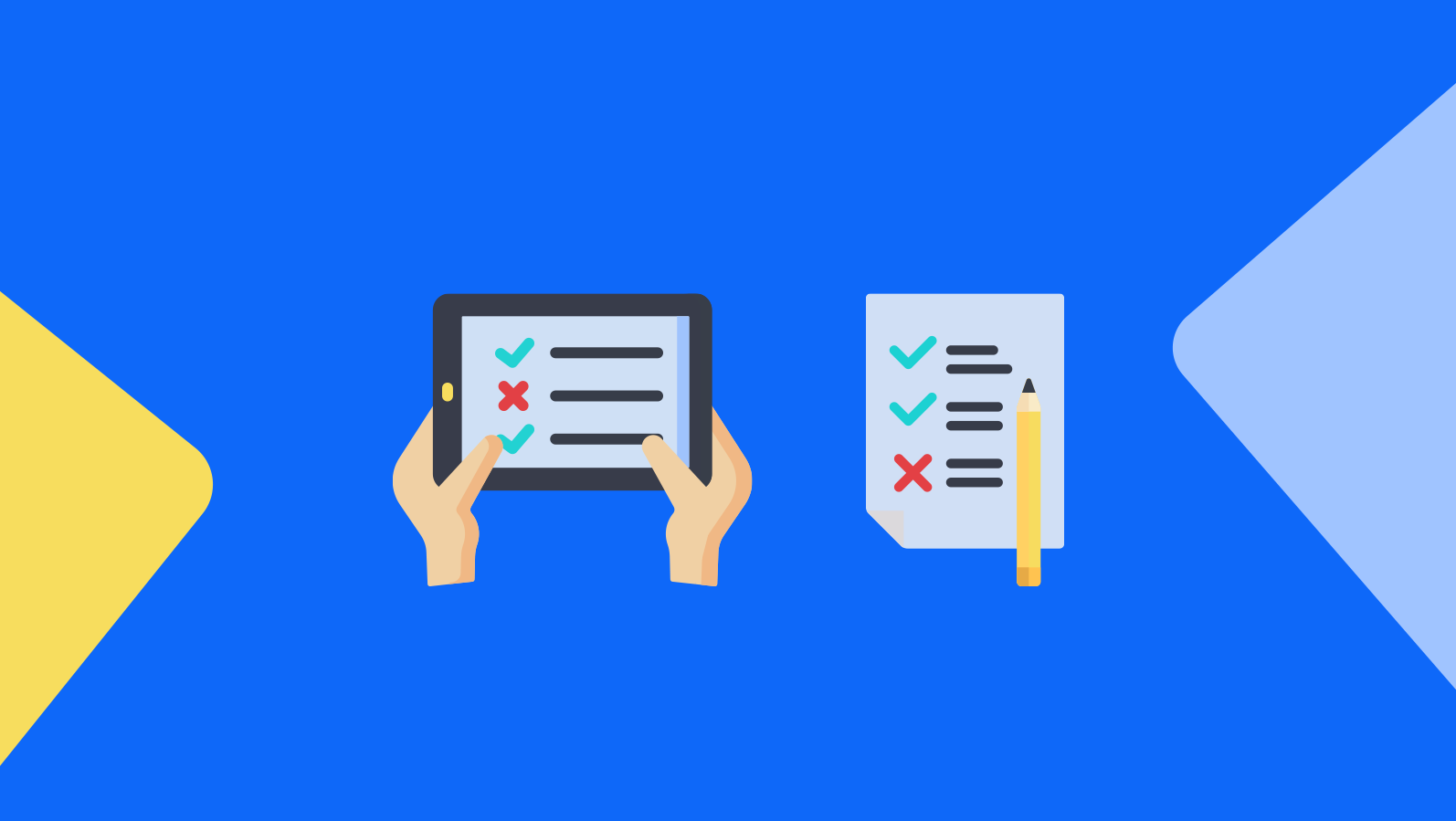
Survey panels and organic sampling are two of the major methods used to collect survey data. Since getting survey responses without the assistance of software is an almost impossible feat, these two methods have reigned supreme.
Both of these survey response mechanisms are unlikely to wane anytime soon, due to the prevalence of online surveys. As a matter of fact, the online survey software space has risen by 8% between 2015 and 2020.
With online surveys granting market researchers and marketers a large sweep of survey types to conduct, the point of contention becomes: which type of survey response collection data is better, survey panels or organic sampling?
This article will explore both forms of data collection so that you can objectively decide which to opt for in your survey research campaigns.
Defining Online Survey Panels
Survey panels, also called online panels or research panels, all denote a data collection method in which responses are collected by way of pre-recruited and pre-screened respondents who agreed to take part in a survey.
This method helps businesses in that it assures them that a group of people will take their survey; usually, members of their target market are called upon to take the survey.
There are a number of ways survey panels can be assembled. One such method involves mail-in recruitment, which has significantly declined in the digital age. Another relies on phone calls via Random-Digit Dial (RDD), a method in which respondents are chosen to take a survey from random telephone numbers.

When it comes to recruiting survey panels digitally, they are garnered through an opt-in format such as a signup page or through an email invite that routes users to the survey page. All of these recruitment manners have low participation, as few people opt into panels.
That is why some brands and market researchers resort to compensating their pre-screened panelists.
The Pros and Cons of Survey Panels
Now that you understand the basic methodology behind survey panels, you ought to consider their pros and cons before fully forming your opinion on whether to use them or not.
The pros of online panels:
- They provide a network of respondents for continuous survey participation. This is especially useful if you need to conduct longitudinal studies.
- They are inexpensive and create fast studies.
- Returning to the same respondents, allows you to detect changing opinions over time, allowing you to see how your target market changes its opinions.
- They allow you to create informed custom polling questions based on previous research.
The cons:
- Repeated survey participation causes panel fatigue, a term denoting the decline in the quality of survey data, due to the boredom or exhaustion of a panelist. This creates them to inaccurately provide responses, either due to skipping questions, ticking off the “don’t know” option or rushing through a survey.
- They occur in non-organic (unnatural) environments — inauthentic environments create inauthentic responses. This is because a survey’s environment can affect its’ respondents’ mindsets.
- Web panels gather respondents either on desktop or mobile, creating scenarios in which participants are dependent on device types. As such, the survey experience is not very adaptive.
- Panel conditioning: Repeated survey participation can change respondents’ true attitudes, behaviors and knowledge. This makes it difficult to differentiate between actual changes and changes in reporting behaviors.
Random Device Engagement (RDE): A Precursor to Organic Sampling
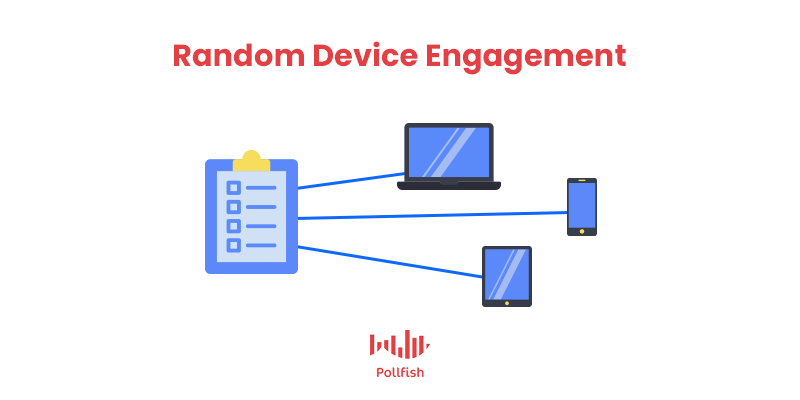 Before you analyze the organic sampling method, you should understand what makes it tick. That is because organic sampling is reliant on the delivery structure known as Random Device Sampling (RDE).
Before you analyze the organic sampling method, you should understand what makes it tick. That is because organic sampling is reliant on the delivery structure known as Random Device Sampling (RDE).
This framework implements intent-based behavioral targeting, typically used by advertisers, to narrow down random respondents in a digital setting, such as on websites, mobile sites and mobile apps.
Thus, it provides a solution for randomization and capturing the correct audience.
Random Device Sampling works by tracing the unique IDs of respondents, which are used to track them across devices. RDE, therefore, institutes a mechanism that is both random and organic.
Organic Sampling Defined
Also called random organic sampling, this method refers to an RDE-based response collection method in which a survey is deployed randomly to users who are already in apps and other digital spaces.
Since surveys are randomly transferred, this method allows respondents to take the surveys while they are in their organic environments. These are the spaces that users spend time in organically, meaning they chose to take part in those environments, rather than being taken there via a promotion, incentive or signing up at a web panel.
Organic sampling works by giving optional invitations (or call-outs) to users in organic settings, so that they would partake in quick surveys. These invitations (along with the surveys themselves) are natively integrated within the digital environments (ex: apps) that the users are in.
This makes several benefits possible.
The Pros and Cons of Organic Sampling
Powered by Random Device Engagement, organic sampling has many upper hands. However, like the panel survey method, organic sampling also presents certain disadvantages that you should carefully consider. You ought to weigh them against one another before deciding whether or not to use them.
The Pros of Organic Sampling
- An organic environment allows you to avoid panel conditioning, allowing you to extract genuine responses from participants.
- It targets respondents’ unique IDs so that they can be traced even while shuffling between devices, preventing the same participants from taking the same survey twice.
- Using respondents’ IDs allows you to create respondent profiles, which build an overview of the respondents’ behaviors demographics, which are critical data to possess.
- In turn, the respondent profile helps prevent fraud, as multiple accounts or bots won’t able to submit their surveys.
- It yields high response rates (higher than RDD and survey panels).
- It creates a seamless UX across all device types, rather than being tied to just one with little wiggle room.
- It provides vast coverage, as RDE integrates natively with a bevy of digital and mobile platforms. That entails greater accuracy.
The Cons:
- It relies on non-probability sampling, wherein some of the members of a population have been excluded and this amount cannot be calculated, which limits how much you can determine about the population from the sample.
- It will include biases based on the populations you have preset to include in your sample, even if you assign quotas.
- Organic sampling and RDE are at the mercy of the websites and apps that they can be integrated with. It is possible that your targeted sample pool visits apps and other digital places that your RDE survey isn't integrated with.
Which Sample Pool Method Reigns Supreme?
While random organic sampling has made a mark in the survey realm, due to Random Device Engagement, it still faces its rivalrous counterpart: survey panels.
Other forms of survey sampling methods have been on the decline, yet survey panels are still in use. While they may appear to have fewer advantages and more disadvantages, survey panels still provide value to researchers.
As such, it is entirely up to you to decide which survey sampling method is best for your market research needs. Random organic sampling is our survey sampling method of choice, as it continues to rise above survey challenges, provides solid results and does so in a short span of time.
Frequently asked questions
What is an online survey panel?
Also called online panels or research panels, an online survey panel is a way of repeatedly collecting data from pre-recruited respondents via digital surveys.
What are some of the benefits of an online survey panel?
Online survey panels allow companies to quickly and inexpensively collect data from a group of people since the recruitment and screening process only needs to be performed once. Since responses are collected from the same group over time, they are able to show if and how opinions or behaviors change over.
What is panel fatigue?
Panel fatigue is a concern associated with survey panels. It occurs when panel participants become bored or tired of replying to surveys. This can result in the overall inaccuracy of the data collected from that participant.
What is organic sampling?
Organic sampling, or random organic sampling, refers to the process of distributing surveys to a random group of respondents. The respondents are typically sourced from websites or apps where they are given the option to participate in a survey.
What are the benefits of organic sampling?
Organic sampling can help prevent some of the pitfalls of survey panels including panel fatigue and panel conditioning. Organic sampling also tends to yield higher response rates and can help prevent fraud or data errors.
How Market Research Can Build Consumer Loyalty
How Market Research Can Build Consumer Loyalty
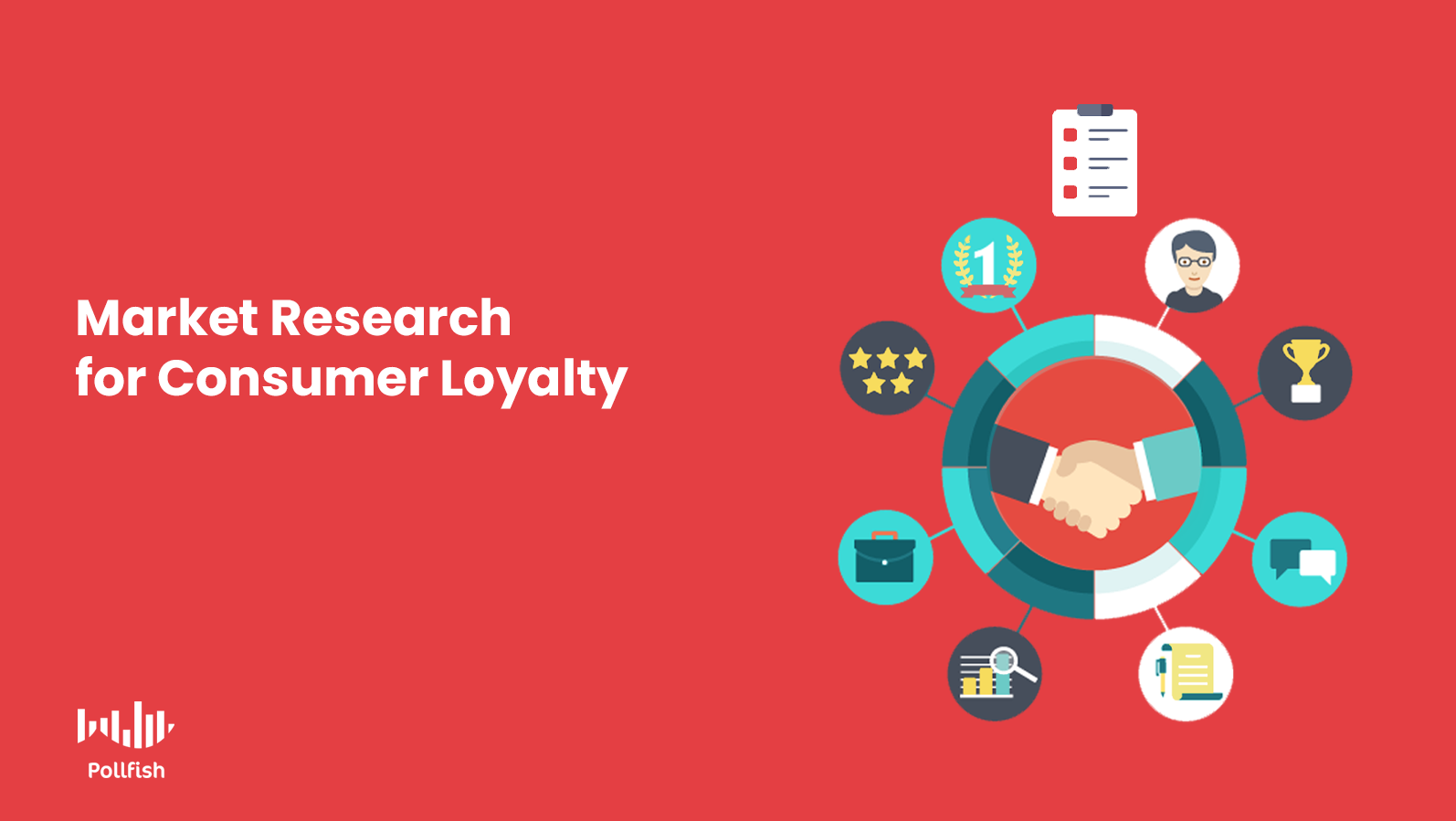
Consumer loyalty is the principal objective of any business, a purpose more that should be more sought after than sales alone. This is because consumer loyalty is the main driver behind repeat sales.
This end cannot be reached overnight and to the surprise of many brands, it cannot be reached simply with a quality product. Instead, it takes several factors to build consumer loyalty.
This article explores consumer loyalty, why it is crucial, how it can benefit your business and mainly, how market research can help you achieve it.
Defining Consumer Loyalty
Consumer loyalty can be defined in several ways, some are more specific than others. While it may sound self-explanatory, for the purposes of market research, this concept is specifically defined as: the measure of a customer’s likelihood to patronize a business repeatedly.
As the name suggests, this phenomenon stems from a feeling of loyalty to a brand, the kind that chiefly results from product satisfaction, customer satisfaction, and a good customer experience (CX). However, there are many other aspects that play a role in consumer loyalty.
These can be difficult to obtain as brands cannot fulfill all of their customers’ wishes. They certainly cannot achieve this feat if they do not know all of their customers’ pains, needs and concerns.
This is where market research comes into play. You can conduct market research in a number of ways.
What Brands Gain from Consumer Loyalty
The goal of consumer loyalty is crucial to obtain and not just for the evident reasons. There are key facts on consumer loyalty that bear statistical importance. As such, brands need to approach this topic seriously.
Firstly, customer Loyalty is the main contribution to customer retention. A mere 5% increase in retention raises profits by 25-95%. This is not only because retained customers make repeat purchases, but also because repeat customers spend more money.
Consumer loyalty breeds brand ambassadors, and 83% of consumers will recommend a brand they are loyal to.
Aside from these statics of customer loyalty gains, you ought to know how customer acquisition — the act of gaining new customers measures up to customer loyalty. While acquiring new customers is key to business growth, customer loyalty still reigns supreme in comparison. This is because:
- Acquiring new customers costs about five times more than retaining existing customers.
- Selling to loyal customers has a 60-70% success rate, while selling to new ones has a 5-20% success rate.
How to Build Customer Loyalty with Market Research
Market research is an umbrella term that covers various methodologies to determine the success of a new product or service through researching one’s target market, competitors and the general state of an industry.
By examining your target market, i.e., customer base, you can learn about its preferences, needs and pain points. Tapping into the minds of your target market will allow you to serve them best, whether it is through new products, product upgrades, online experiences or general CX (customer experience).
Market research involves using primary and secondary research, that is, self-conducted research and research that has already been conducted and made available, respectively. The following delineates the attributes that foster customer loyalty, along with how market research can build them up.
- Usability: Customers need to be reassured of the usability of your products/services. Understanding the ease of use of your offerings is thus crucial to creating customer loyalty. Primary research such as focus groups and surveys reveal the degree of your business’s usability, paving the way for understanding what works and what doesn’t.
- Trust: If customers don’t trust your brand for any reason, they will not return for future transactions. To test how you fare with your customers, conducting customer satisfaction surveys, Net Promoter Score (NPS) surveys and other customer loyalty surveys. To get a sense of how customers generally view brands in your niche, you can use secondary research like statistics sites, industry reports and blogs in your industry.
- Customer Service: A key part of UX, customer service involves any touchpoint in which customers interact with company representatives. This includes leads speaking with sales representatives over the phone, a customer relying on a cashier or sales associate for help in-store, chatting with a rep via a site’s chat or getting phone support. You can use secondary research to get an overview of customer service in your industry via industry sites. You can also conduct secondary research on your competitors for ideas on how to boost your own customer service.
- Personalization: Greeting customers by their names on your digital properties is no longer a potent personalization method. Instead, customers are looking for more targeted efforts to show that their unique needs and desires are being met. As such, brands should avoid taking generic approaches in customer messaging and journeys. Instead, brands can use secondary research to see what segments in their target market desire. In order to conduct market segmentation, you are going to need to use surveys. Additionally, to understand your customers at a deeper level, you’ll also need to implement surveys.
- Social Media Presence: Social media has allowed brands to create more intimate relationships with customers. Creating social content can pique the interest of existing customers, prompting them to return to your brand at least to browse your social content. This can relieve them of boredom or curiosity, while keeping your brand on their minds. Primary research such as surveys can help you test your social media strategy to see what type of messaging and topics yield the most positive reactions.
Best Practices to Nurture Customer Loyalty
Developing customer loyalty requires market research and after you’ve gathered a substantial amount of it, it’s time to implement some best practices. You can experiment with the following options to see which tactic works best for growing customer loyalty.
- Loyalty rewards programs: an oldie but a goody, this type of program helps both to attract customers and to keep the customers buying from you. This program, like its name implies, rewards your customers for being customers. For example, you can implement a point-based system based on the number of purchases customers make, which will reward customers with a discount, credit or some other benefit when a certain amount of points is reached.

- Optimize your digital user experience (UX): We live in the digital age, where many purchases are done online. But it doesn’t end, as window shopping is also done in an online format. Many shoppers browse websites to get a sense of your offerings, so you should ensure your best offers are on display, along with seamless website experiences. Avoid long page load times, messy navigation or time-consuming check-outs.
- Communicate with targeted solutions: Show your customers that you’ve been paying attention by only massaging them with targeted solutions. For example, if they frequent your business for one type of need, focus on those such products. Give suggestions on past purchases and cater to their whims. You can achieve the latter by scrutinizing your customers directly, by way of questionnaires.
- Innovate your products: Product development can be laborious and pricey, but it is well worth it when it comes to customer loyalty. With competition left and right on the internet and in brick-and-mortar shops, consumers will look to brands that provide the best product experiences. As such, you should research your top competitors to see how they’re improving their products. You should also inquire from customers directly, what they would like to see improve from your products/services.
- Hire employees who care: Since customer service is dependent on interactions with employees, you ought to hire carefully by vetting your job applicants. You should also place etiquette and politeness as top qualities for any consumer-facing role. But aside from hiring the best talent, you ought to keep your talent happy. Implementing employee satisfaction surveys will help measure how satisfied your employees are on the job. Employee happiness is sure to relay over to customer interactions.
Market Research: The Constant Giver
Since market research is concerned with staying in the know constantly on your market, customers and competitors, it is thereby a perennial tool for various business needs. As such, it is more than just a tool, as it entails using various sources of data.
Continually performing market research through both secondary and primary means will ensure you’re ahead of the curve, especially when it concerns consumer loyalty. Let’s face it, no matter how well you improve your product, service and customer experience, you are not a mind reader.
Consumers change their minds and can be swayed by competition instantly, especially in our increasingly digital world of information (think advertisements) overload. Surveys are thereby a vigorous instrument to measure customer satisfaction, calculate glitches, reveal frustrations and much more. You can uncover virtually any aspect of the customer experience through survey research, therefore empowering your business and stimulating customer loyalty.
Frequently asked questions
How is consumer loyalty defined?
Consumer loyalty is a measure of how likely it is that a customer will purchase from a business again. When individuals feel loyal to a brand, they are more likely to purchase from it repeatedly.
What are the benefits of consumer loyalty?
Companies that are able to increase consumer loyalty will see an increase in their profits. This is not just from repeated purchases, but also because customers are likely to spend more on subsequent purchases. In addition, the cost of marketing to and acquiring new customers is greater than the cost of retaining current customers.
How can market research help improve consumer loyalty?
Market research provides companies with a greater understanding of their target market and existing customers. By gaining a deeper view into their needs, preferences, and frustrations, the company can improve their products and overall experience, which in turn makes it more likely that they will purchase from the company again.
How does customer service contribute to consumer loyalty?
When customers get the support they need before, during, and after their purchase, they are more likely to consider their interaction with your brand in a positive light. They are more likely to purchase from the brand again, even if they were not happy with their initial purchase.
How does the digital user experience influence consumer loyalty?
With a great number of purchases made online, it is vital that the online experience is flawless. A well-designed website that loads quickly and offers in-site support is more likely to encourage return visits.
How to Conduct Fashion Market Research Like a Pro
How to Conduct Fashion Market Research Like a Pro

Fashion market research provides business owners and entrepreneurs with valuable insights so they can make confident, informed decisions to guide the development or evolution of their fashion business.
Valued at an impressive 1.5 trillion U.S. dollars in 2020, the global fashion/apparel industry is a behemoth industry covering a wide variety of garments and accessories.
While this sector has traditionally experienced consistent growth, the past year has been turbulent and challenging. Whether you are considering a new fashion venture or are looking for innovative ways to recover from an unprecedented year, market research is an effective way to guide your efforts.
This article covers how to conduct a combination of primary and secondary research o to power your fashion market research campaign.
Fashion Market Research Overview
Fashion market research is the process of gathering and analyzing information to gain insights into the fashion industry, which includes its top players, your competitors and mainly, your target market. Whether you own an existing apparel business or are considering an entry into the world of fashion, market research can ensure effective use of your marketing expenditure and increase the likelihood of business success.

Fashion market research is used to achieve the following:
- Understand how customers relate to your brand or a competitor’s brand.
- Identify areas for growth, new markets, and customer segments.
- Understand how existing customers would like to see your brand evolve.
- Gain insight into consumer spending when it comes to fashion needs and wants.
- Collect information about consumer opinions and interactions with various fashion segments (e.g. fast fashion vs. luxury brands).
- Understand how fashion marketing campaigns influence consumers’ opinions and behavior.
Undertaking a market research campaign project can provide you with the confidence you need to succeed in a highly competitive industry. The end-goal of fashion market research is to gain sufficient information to make informed decisions about your business so that it can thrive.
The Makeup of Fashion Market Research
Fashion market research is made up of two sources of information, referred to as primary and secondary research. By using both primary and secondary sources of information, you can determine several key factors about your target market and its various segments. These include:
- Annual spend on fashion in your niche
- A comparison of shopping experience frequencies, in-store vs. online
- Wardrobe share of certain brands and/or apparel categories
- Where and how your target market discovers your brand
- Shopping triggers
- Spending forecasts
- Marketing channels
- Product diversity
- How in-demand your products or brand are
To reap the most insights, you should plan to incorporate both primary and secondary sources to drive your fashion market research towards success.
Primary Research for the Fashion Industry
Primary market research refers to the unique data that is gathered from first-hand sources. While it is more labor-intensive to gather primary information, you are rewarded with data that is particularly relevant to your particular business and customer base. It also puts you in control in terms of the data you collect and then leverage.
The most valuable sources of primary information for fashion market research are:
- Online survey tools about existing or prospective customers, i.e., those in your target market that have not yet bought from you.
- Phone, in-person, and mall intercept interviews
- Focus groups:
- In contrast to one-on-one interviews, a focus group allows for moderated discussion among participants. This provides the opportunity for the group to share ideas and discuss a topic or trend, which is particularly useful when conducting fashion market
- Field research:
- This gives marketers an opportunity to observe and understand how customers behave in a natural setting. When it comes to fashion market research, field research provides valuable information about how customers browse and shop, both in-store (through natural observation) and online (via session replay tools).
- User testing:
- Often used to test out new design concepts, user testing gauges customer interest and reception. It is also used to test out in-store shopping experiences and changes to fashion websites.
Secondary Research for the Fashion Industry
Secondary research is performed by sourcing data from existing, published sources, i.e., data that you don’t need to amass yourself, as it has already been conducted. You should then parse through and organize the secondary data to prepare it for analysis. A strong analysis involves comparing the secondary resources against each other, along with their primary source counterparts.
Good sources of secondary information for the fashion industry include:
- Market and industry research reports and white papers
- Fashion industry websites
- SEO, keyword, and trends research
- Governments statistics
- Your competitors’ websites and other digital properties such as apps, mobile sites, ads, etc.
Secondary Research Sources for Fashion Market Research
To give your fashion market research a jumpstart, we have gathered some of the most relevant sources of secondary information for the fashion industry.

- Marketresearch.com Market Research Reports & Industry Analysis: A veritable font of information about the fashion and apparel industry, this site lets you search and filter to find general industry reports and more specific reports that pertain to your niche or sub-sector.
- McKinsey’s State of Fashion Annual Report: A trusted global consulting group, McKinsey publishes a free annual report on the fashion industry that contains insights on the global economy, consumer spending and behavior and the fashion industry as a whole. The recently published report on fashion in 2021 pays special attention to the impact that COVID-19 has had and will continue to have on the industry in the coming year.
- Statista.com Global Apparel Market - Statistics and Facts: Statista offers a wealth of information and statistics on the fashion market. You can access a variety of charts and reports for free, or purchase more comprehensive reports, such as Apparel Market Worldwide dossier.
- NPD Fashion Trend Tracker: The global consulting group NPD has created a subscription-based trend tracker that provides the latest information on changing fashion trends. Use this to track change and identify areas of growth in your vertical.
- NPD website: In addition to paid sources of information, the NPD Group is also an excellent source of free information about the fashion and apparel industry, published as articles and blog posts on their website.
- The Business of Fashion: This online magazine collates insights gathered by journalists in over 125 countries. Subscription-based memberships are available for those who want to gain insights from a leading source of fashion industry news and information.
- KPMG Sustainable Fashion report: Published by KPMG, this free report focuses on consumer perception of sustainable fashion. The group interviewed over 1,000 individuals in the world’s largest cities to understand how consumers relate to sustainable fashion and responsible buying behavior.
- CommonObjective.co: For anyone with an eye on sustainability as it pertains to fashion, Common Objective is a valuable source of both free and paid information about trends, sourcing, marketing, consumer behavior, and more.
Confront New Challenges with Market Research
Fashion businesses have more challenges to consider than ever before. If your business is struggling to recover from the global pandemic, market research can help you identify new areas of growth. With a tightened budget, market research is vital to ensure your marketing and advertising spend is used wisely.
Or perhaps you are looking to evolve your business in response to the concerns of “woke” consumers, who demand a higher level of environment and social responsibility from fashion brands. Market research can help you meet these demands and shape your targeted messaging.
Even without new challenges, every fashion business fights the constant battle to remain relevant and stylish in an ever-changing landscape. Consumers on the hunt for something unique and new will continue to push fashion brands to evolve their style to satisfy their customers’ demands.
Fortunately, this demand comes with more direct access to your customers via social media. You can benefit from an engaged audience by regularly deploying online surveys to gather insights about their needs and desires, no matter how often they change.
Regardless of your motivations, fashion market research can provide you with valuable insights to help you make confident decisions in the months and years to come.
Frequently asked questions
What is fashion market research?
Fashion market research involves collecting and analyzing data in order to gain a better understanding of how an apparel business is positioned in the competitive landscape.
Who can benefit from fashion market research?
Fashion market research is beneficial for a wide variety of businesses that operate within the fashion industry. This includes established brands, fashion startups, brick-and-mortar stores, apparel chains, and artisan fashion producers.
What are some of the reasons for conducting fashion market research?
Fashion market research can help a business identify new target markets, understand how existing customers feel about their brand, gain insights into fashion spending, and explore how marketing campaigns can affect buying behavior.
How is fashion market research conducted?
After identifying the goals of the fashion market research project, the team will conduct primary and secondary research to gather information from the appropriate sources. Then, this information will be compiled into a report that contains findings and recommendations.
What types of primary research are most appropriate for fashion market research?
The most useful types of primary research for the fashion industry include surveys, interviews, focus groups, field research, mall intercepts, and user testing.
Diving Into Cross-Sectional Surveys
Diving Into Cross-Sectional Surveys
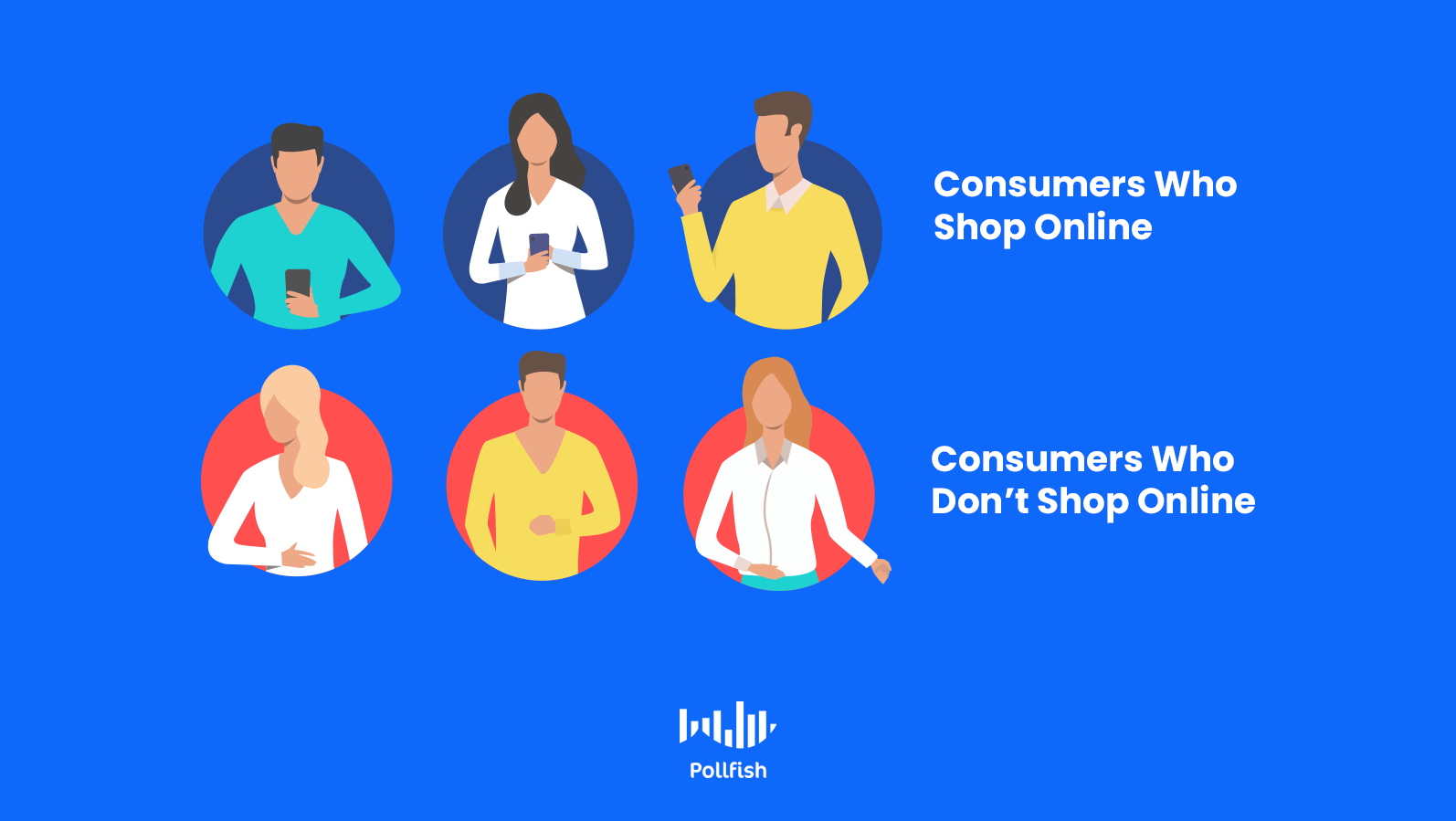
There are several survey studies that you can conduct on consumers or on virtually any subject you wish. As mentioned previously, there are three main types of survey research methods: cross-sectional studies, longitudinal studies and retrospective studies.
Fortunately, you can create and customize a survey for each type of survey research method. In this article, we will delve into cross-sectional surveys, which are a part of their own distinct set of survey research: cross-sectional studies.
Mainly used in developmental psychology, this research method expands to a wide variety of other sectors. This includes studying consumers and a business's target market.
Defining Cross-Sectional Surveys
A cross-sectional study is defined as a study in which research is gathered about a particular population at one fixed point in time. As such, this type of survey research method has been dubbed as a snapshot of a studied population.
This kind of study is conducted via cross-sectional surveys, surveys designed specifically for the cross-sectional model. Using an online survey tool, researchers and business owners can craft their own cross-sectional surveys and deploy them to a specific sample pool.
This type of survey therefore does not require using a survey panel. In fact, it is often contrasted to panel surveys, as they follow a panel over several points in time. Additionally, it runs contrary to longitudinal studies, as they too inspect participants beyond a specific position in time.
The Key Aspects of Cross-Sectional Surveys
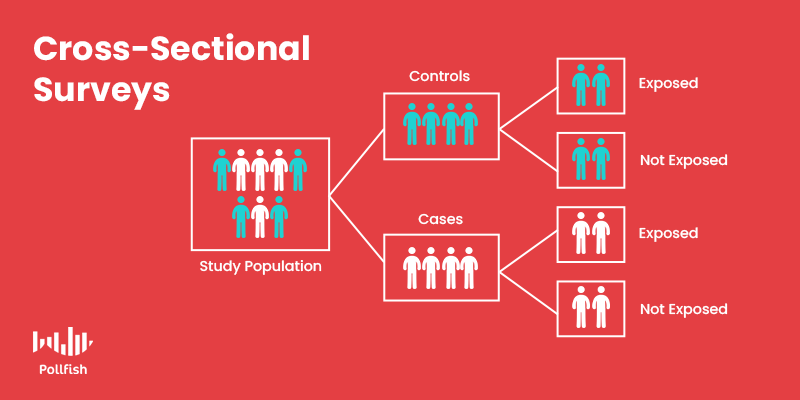
To fully understand cross-sectional surveys, aside from their definition solely, you ought to understand their key features. The following lists the core aspects that distinguish these surveys from that of others. Here is how they differ aside from their deployment frequency:
- They are part of observational studies, in which no intervention takes place, only pure investigation.
- They fall under descriptive research, which seeks to describe the what, how, when and where of variables, as opposed to the why.
- They can find current and prevalent attributes in a population.
- They do not manipulate variables.
- They cannot be used to uncover the cause of something, but rather the makeup of a phenomenon or opinions thereof.
- Researchers use them to look at various respondent characteristics, such as age, education, income, gender, etc.)
- They provide an overview of what is occurring in a particular community, situation, etc.
How They Differ from Longitudinal & Retrospective Surveys
Cross-sectional studies are in diametric opposition to longitudinal studies; they are also different from retrospective studies. As such, the surveys for each will differ in design, function, frequency of deployment and purpose.
Unlike cross-sectional studies, longitudinal studies observe a group of people over an extended period of time, as opposed to just over one point. The length of study varies; it can take place anywhere from weeks to years.
Therefore, these studies help put forth a depiction of a sequence of events. These are used to detect changes and developments within the sampling pool. Cross-sectional studies, on the other hand, paint a picture of just one moment in time, usually the prevailing one.
Retrospective studies combine aspects of both cross-sectional and longitudinal studies. They study respondents with surveys that deal with questions about past events. In this way, researchers can compare past feelings and attitudes with those of the present, much like in longitudinal studies.
However, retrospective surveys can be conducted just once, as with cross-sectional surveys. They may amass data on one point in time or several.
Additionally, unlike longitudinal studies, which involve continuous studies, retrospective surveys draw from a pool of an already existing data set. As such, they only deal with events of the past and will not gather any data on new opinions and attitudes that respondents may hold.
It’s important to note that all three of these research methods/survey types are observational, allowing researchers to record and understand the subjects’ behaviors via observation only.
The Types of Cross-Sectional Surveys
There are two types of cross-sectional surveys: descriptive and analytical. Typically, researchers rely on both when conducting this type of study. However, one of these methods may exist entirely on its own.
Descriptive:
A cross-sectional descriptive survey evaluates how frequently, widely, or extensively a particular behavior, phenomenon, attitude or opinion occurs in a demographic group. The findings of each of these categories is thus reviewed and measured on prevalence.
There is a slight distinction made when assessing these different traits in that, when performing studies on the prevalence of something, the study is called a “prevalence study.” On the contrary, when feelings and opinions are analyzed, it is called a “survey.” In either case, surveys can be used to study all of these categories.
Since it is purely descriptive, this method can exist on its own in a cross-sectional study, as opposed to the following study.
Analytical:
An analytical cross-sectional survey probes into the association of two related or unrelated variables. This type of research isn’t entirely infallible, as variables and outcomes are simultaneous, along with their studies.
For example, say you need to find the association between a risk factor and health. Since the risk factor and health result are measured concurrently, with no other variable taken into consideration, it may be difficult to determine whether the risk factor alone contributed to the health outcome. Due to this limitation, analytical studies are usually not conducted alone.
Which Industries Depend on these Surveys for Market Research
There are various industries that depend on cross-sectional surveys for their market research needs. As such, these surveys can serve a wide variety of applications. The following cites several industries that put these surveys into practice.
- General business: In the general business sphere, you can conduct these studies to understand how your target market and its segments react to changes in offerings, along with how you set up marketing, advertising and branding campaigns.
- Healthcare: Researchers may use this survey to study how certain groups of people are prone to certain disorders and conditions, along with how lifestyle changes affect health and much more.
- Retail: Retailers can use these surveys to find trends in relation to spending and how they differ between genders and income levels.

- Psychology: Psychologists can conduct these surveys to study a wide variety of people to understand similarities and differences in their mentality and psyche.
- Education: This survey can help educators understand how students of various grades perform in a new course of study.
- Real estate: Real estate agents and business owners can use these surveys to measure the demand of real estate in particular neighborhoods at the current time.
- Technology: Those in the tech sector can learn the prevalence or existence of certain frustrations and pain points that new SaaS or tech products can help solve.
The Pros and Cons of Cross-Sectional Surveys
Like many other types of survey research methods, cross-sectional studies offer both advantages and disadvantages. It’s vital to consider both of these facets, as they will not merely guide your decision in choosing to use these surveys. They will also allow you to know what to expect if you do use them for your market research needs.
Pros
- Surveying multiple variables shows how differences in income, gender, age, et al. correspond with a critical variable of interest.
- Can be used to prove or disprove assumptions and hypotheses.
- Relatively inexpensive to conduct.
- Fast results despite large amounts of data from a large sampling pool.
- Findings can be used to create new hypotheses, inciting new studies and more thorough research.
- Captures the specific feelings, attitudes and behaviors at a specific point in time.
- Can be used for a wellspring of other research methods (retrospective surveys, market segmentation, branding, etc).
Cons
- Cannot be used to uncover behavior over a period of time.
- Does not determine cause and effect since variables can affect the relationship between the cause and outcomes.
- Cannot be used to find conclusions about causation.
- Results can be biased if there is a conflict of interest (with the funding source).
- Cohort differences can affect groups. (Those born in the same decade may share certain experiences, but those within that group born in a certain area may share only experiences connected to their location).
Questions, Trends and Key Things To Remember
There are a variety of questions pertinent to cross-sectional surveys, as they are descriptive and observational in nature. You would compose them based on the prevailing characteristics you want to unearth or see if there are any correlative qualities behind components like risks, behaviors and outcomes.
As such, there is no list of general questions to ask in these types of studies, as they are specific to populations, variables and their conditions. Investigating the ins and outs of a specific population allows marketers and business owners to understand the relationships between variables. If you need to examine trends, you can repeat these surveys at different points in time. But remember — these surveys should NOT be repeated in the same group of respondents, as they are not follow-up surveys, which are only used in longitudinal studies.
Frequently asked questions
What is a cross-sectional survey?
A cross-sectional survey is conducted to gather information about a studied population at one certain point in time. It is sometimes referred to as a “snapshot” survey.
How does a cross-sectional survey differ from a longitudinal survey?
Performed to examine a population at a specific point in time, a cross-sectional is the opposite of a longitudinal survey, which is conducted to study how certain variables change in a population over a period of time.
What is a descriptive cross-sectional survey?
A descriptive cross-sectional survey is one that measures how frequently or extensively a behavior, opinion, or phenomenon occurs.
What is an analytical cross-sectional survey?
An analytical cross-sectional survey is conducted in order to better understand the relationship between two or more variables.
How are cross-sectional surveys similar to retrospective surveys?
Cross-sectional and retrospective surveys both ask questions about events or occurrences that happened in the past. This helps researchers understand how feelings and opinions change over time.
How to Use Surveys to Bolster the Voice of Customer (VoC)
How to Use Surveys to Bolster the Voice of Customer (VoC)
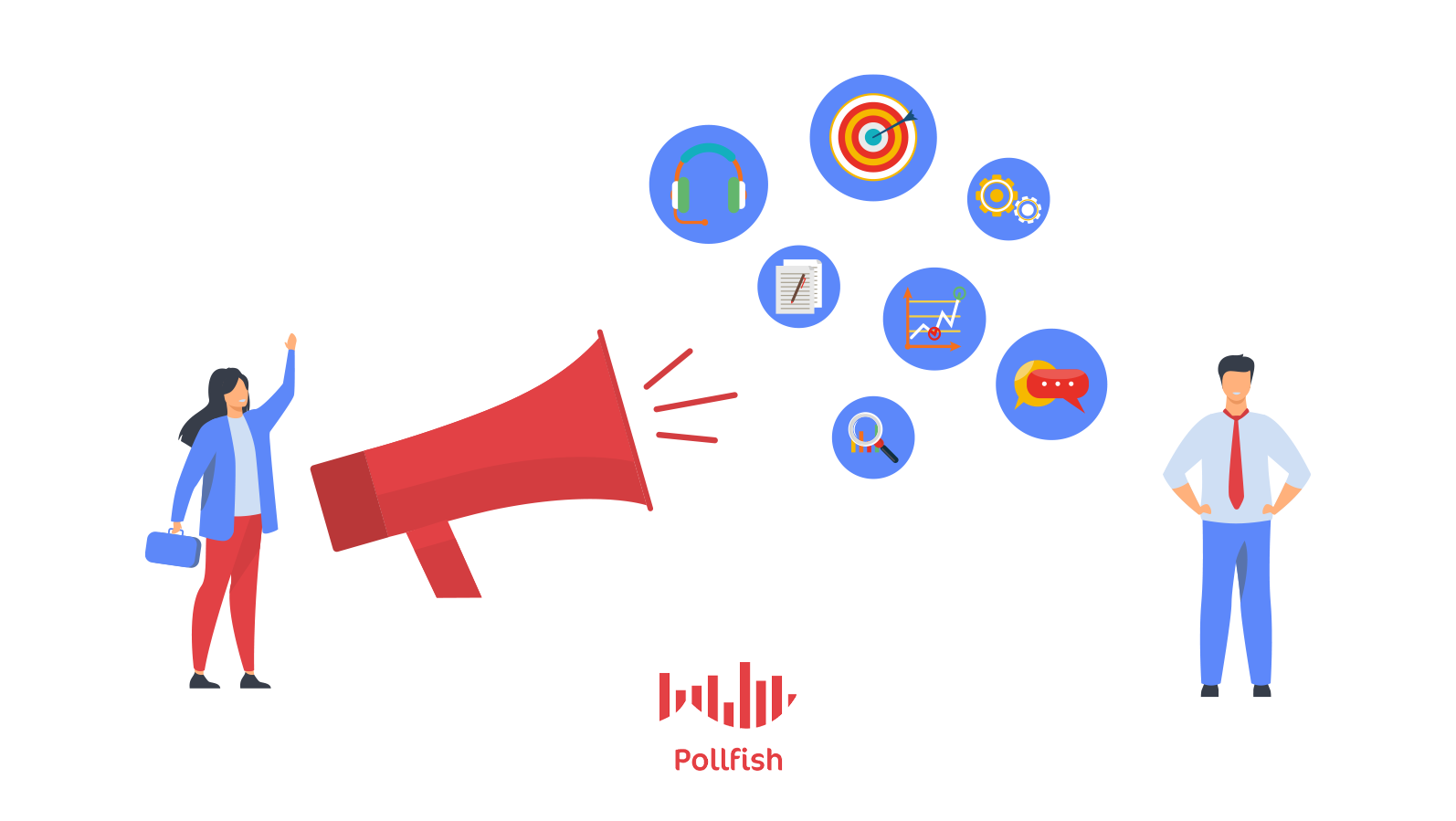
Voice of the Customer, or VoC, is a term used to describe customer feedback. VoC has made waves in the customer experience (CX) space and is considered a core business strategy.
This is largely due to VoC programs’ (such as VoC surveys) contribution to improving customer satisfaction. Happy customers won’t just purchase from a brand once; rather they are likely to become loyal to it, which entails making repeat purchases.
The PWC has found that 43% of customers are willing to pay more for a good customer experience. Consequently, a bad customer experience will drive customers and potential customers away from a business.
This article will explain the Voice of Customer in-depth so that you can implement an effective VoC program.
Defining the Voice of Customer
While VoC falls under the specialty of customer feedback, it denotes so much more. Voice of Customer is a research method businesses use to discover the needs, complaints and general commentary of their customers.
It isn’t merely a single touchpoint, such as a conversation with a salesperson, as it constitutes a process. The VoC process includes various programs that work to capture all that customers have to say about a brand, product, service or experience.
It consolidates all of this feedback into a general customer perspective of a brand. Brands can then use this perspective to bridge the gap between customer expectations and business practices.
In short, VoC allows brands to fully understand their customers’ specific grievances and likings of a brand, along with their overall views of it.
Voice of the Customer Applications
VoC programs have a wide scope of utility. That is why you can tinker your VoC outlet to gather specific information around your business. The following lists some of the most crucial applications VoC can help execute.
- Informing the design specifications of a new product.
- Improving the functionality of a product or product feature.
- Gaining access to the sentiment around interactions with representatives and other employees.
- Finding product, service or experience features that are excelling or poorly performing.
- Identifying glitches in the UX of a product or digital experience.
- Spotting early warnings of a potential brand crisis.
- Creating solutions to improve customer experience.
- Performing market research about your customers and site visitors.
- Avoiding past mistakes and underperforming experiences.
- Increasing customer retention.
Voice of the Customer Examples
As aforementioned, Voice of Customer does not entail only one touchpoint, i.e., the VoC program. Rather, it works via a multi-program approach. The best way to fully acquire and retain your customers’ desires and opinions is by deploying several of them in your process.
The following enumerates key VoC programs for obtaining a sharp sense of your customers in relation to your company.
- Customer Interviews: One of the more traditional VoC programs, these interviews are usually conducted over the phone. A traditional interview requires a company representative to call the customer and inquire about products, services, a recent transaction, a recent customer support interaction or anything else related to company/customer relations.
- Can be done in-person, over the phone, via email.
- Known as the most personal interaction.
- Costliest to conduct.
- VoC Surveys: Surveys allow you to collect customer feedback via customer satisfaction surveys. Luckily, there are several survey types that fall under this category such as the Net Promoter Score (NPS), Customer Satisfaction Score (CSAT), Customer Effort Score (CES) and other such surveys.
- Most are conducted online, either on-site or via email prompts.
- Most effective when deployed on-site or in-app to collect real-time users.
- Most scalable program.

- Social Listening: As its name hints at, social listening involves using social media platforms for collecting VoC data. This method allows brands to find, scrutinize, and respond to conversations about them on these platforms. This technique goes beyond tracking reviews on social media, rather it involves gathering real conversations surrounding your business, its offering and associations.
- Can also include online forums, blog comments, and product review sites.
- Great to track for natural commentary about your brand.
- Allows you to respond to customer concerns and assure them their feedback is valued.
- Live Chat: Live chat allows you to speak with customers 1:1, much like you would on the phone, except it is more in line with their real-time issues, ex: trouble at site checkout.
- Allows you to help consumers as they navigate your site or to address problems or questions about your products/service.
- Provides a way to reduce customer dissatisfaction.
- Enables you to gain more insights by sending the customer a follow-up survey.
- Website Behaviors: Studying website behaviors will allow you to detect any site glitches or issues hampering your customers digital UX.
- Shows you how users traverse and interact with your website.
- Can be studied via digital experience analytics platforms.
- Can be compiled via session replay tools.
The Voice of Customer Process
Since VoC relies on more than just one touchpoint, it also entails much more than just the touchpoint, i.e., the program itself. It calls for other actions, as it is a process.
The VoC process will differ from brand to brand depending on the number of VoC techniques you deploy, the timeframe you set to review them and their relation to other campaigns (advertising, branding, etc).
The following steps present a general overview of the main undertakings in a VoC process.
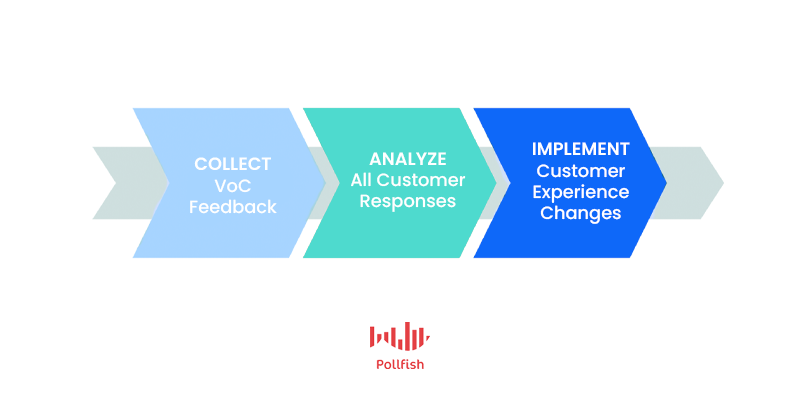
- Collect your data with the programs mentioned above, such as voice of customer surveys, etc.
- Analyze all of your responses across program types. Search for commonalities in complaints, inquiries, points of friction, expectations and other customer concerns. Use these to determine what to prioritize first. You should pay attention to the severity of an issue, along with its frequency.
- Implement any necessary changes to improve customer experience and satisfaction. Make sure to respond to customers who have contacted your business in a way that shows you recognize their concerns and appreciate their feedback. Assure them that their voices are heard and that your brand will take the necessary steps to correct any issue or improve its product, service or experience.
Questions to Use When Collecting VoC Feedback
VoC represents feedback that the customers may have initiated themselves, i.e., when they go to your website and use the live chat, or when they call in to express their opinions with a product or service.
This means that much of the VoC responses you’ll receive are pure commentary, that is, the feedback given directly and not in response to your brand’s questions. However, you can still gather VoC data by asking the questions yourself in your VoC programs.
The following lists question examples to use in your VoC methods. These will help you gather thoughts on various customer/company matters, such as company reputation and brand loyalty.
- What comes to mind when you think about [company/product name]?
- Best Methods: VoC surveys, phone, in-person interview
- What features do you look for in a company or product?
- Best Methods: VoC surveys, phone, in-person interview
- How can [company] improve your customer experience?
- Best Methods: VoC surveys, phone, in-person interview, dedicated feedback forms, social media
- What company and/or product would you recommend to a friend and why?
- Best Methods: VoC surveys, phone, in-person interview
- What is a product/service you prefer over ours and explain why?
- Best Methods: VoC surveys, live chat, dedicated feedback forms
- What were the main issues you had when using our website?
- Best Methods: Live chat, phone calls, VoC surveys
- On a scale of 1-7, how would you rate your interaction with our sales representative?
- VoC surveys, dedicated feedback forms
- The surveys would use Likert scale or semantic differential questions
Taking Your VoC to the Next Level
In summary, brands can record their Voice of the Customer data through a variety of means, including focus groups, emails and even offsite surveys. VoC surveys that can be deployed across websites and apps are the best VoC program environment, as it grants you the ability to collect feedback in real-time and in a timely manner.
The point of the entire process is to learn how to best engage and retain your target market.
A poor customer experience will induce more bounces, fewer purchases and worst of all, the loss of a customer.
Contrarily, a satisfying customer experience will foster customer retention, gaining you a steady stream of repeat purchases and brand loyalty.
Frequently asked questions
What is the Voice of Customer?
The Voice of Customer (or VoC) is a term that is used to describe customer feedback and the programs used to deliver such feedback. It is a research method that is used to better understand the needs, feelings, and complaints of existing customers.
Why are VoC programs important to a business?
VoC programs can improve the overall customer experience, which can result in an increase in overall customer satisfaction, retention, and referral levels.
What methods can be used to gather Voice of Customer feedback?
In order to gain a broader understanding of VoC, businesses often use several methodologies to collect feedback from customers including interviews, surveys, social listening, live chat, reviews, phone support and website user testing.
What are some examples of VoC surveys?
The Net Promoter Score survey (NPS), Customer Satisfaction Score (CSAT), Customer Effort Score (CES) are good examples of VoC surveys.
What is the VoC process for improving the customer experience?
The VoC process is conducted by first collecting data from existing customers, and then analyzing the responses to identify correlations between data. Based on the conclusions of data analysis, changes are implemented in order to improve the overall customer experience.
Diving Into Retrospective Surveys
Diving Into Retrospective Surveys

While most survey research involves looking into the here and now, there is one type of study that does quite the opposite. Retrospective surveys entail examining past events to see how they relate to outcomes (a study of interest) discovered at the beginning of a study.
Used in retrospective research, these surveys unlock many valuable insights that businesses can use to strengthen their marketing efforts and to better understand their target market.
That is because this study is not limited to medicine and psychology. This article will take a dive into retrospective studies and their accompanying surveys to make their purpose lucid in the business world.
Defining Retrospective Surveys
To put it in simple terms, in a retrospective study, researchers gather data on occurrences that have already happened. This places a retrospective study in opposition to a prospective study, in which researchers choose a survey panel or survey respondents from an online survey tool and follow the subjects over a period of time.
Also called historical research, a retrospective study inspects the historical data of a group of people. It falls under cohort studies, which are observational studies that determine how often a phenomenon occurs within a targeted population.
The purpose of a retrospective study is to discover how certain events and mindsets have unfolded or how they developed. It also looks at links and causes between studied events or phenomena. In the case of business, consider the following example:
A group of customers does not wish to make any online purchases. Their aversion comes in spite of the fact that they have internet access and a tendency to frequent the online space. A retrospective study would therefore inspect past events to learn about the factors that contributed to the consumers’ reluctance to shop online.
In this, the study and therefore the retrospective surveys, seek to find the links between experiences and unwillingness to shop online. They would also uncover when these phenomena began.
The Two Types of Retrospective Studies
There are two main types of retrospective surveys. They can be used in tandem as part of the broader retrospective study.
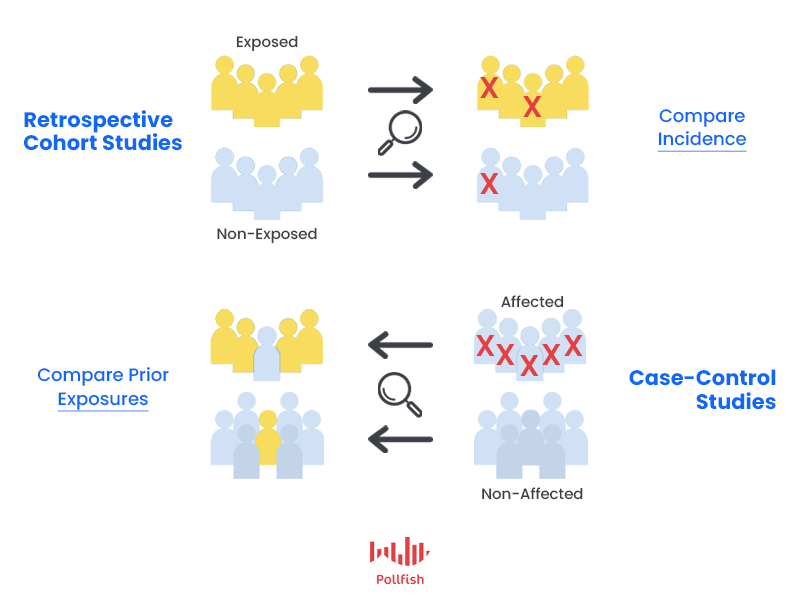
- Retrospective cohort study: This kind of study would seek to compare the risk of developing a certain outcome to some already known exposure factors. In retrospective cohort studies, the exposure and outcomes have already occurred. The studies are conducted on research already in existence. The exposures are defined before looking at the outcome data to see if exposure to a factor is associated with a significant disparity in the outcome development rate.
- Case-control study: This seeks to determine the possible exposure factors after a known incidence. Most case-control studies are retrospective, but some can be prospective. They define two groups at the onset of the study. These include both the one with the outcome and one without the outcome. They look to the past to find if there is a statistically crucial difference in the exposure rates of a risk factor between the two groups.
Using Retrospective Surveys with Cross-Sectional & Longitudinal Surveys
Retrospective surveys are not standalone surveys; they are usually conducted as part of a larger cross-sectional or longitudinal study.
In a cross-sectional study, research is gathered to find prevalence, which is the number of cases in a studied group at a specific point in time. Although cross-sectional and retrospective studies form their own survey methods, they share some common ground. This is mainly due to surveys, in that a retrospective survey, like a cross-sectional survey, can be conducted just once to find historical information.
Retrospective studies can be used with longitudinal studies, which study trajectories and changes over a period of time. Called retrospective longitudinal studies, this kind of research studies a sampling pool over a period of time — the time period involves data that was previously collected. As such, no data from the present and onwards is collected, as it is in longitudinal studies.
Examples of Retrospective Surveys
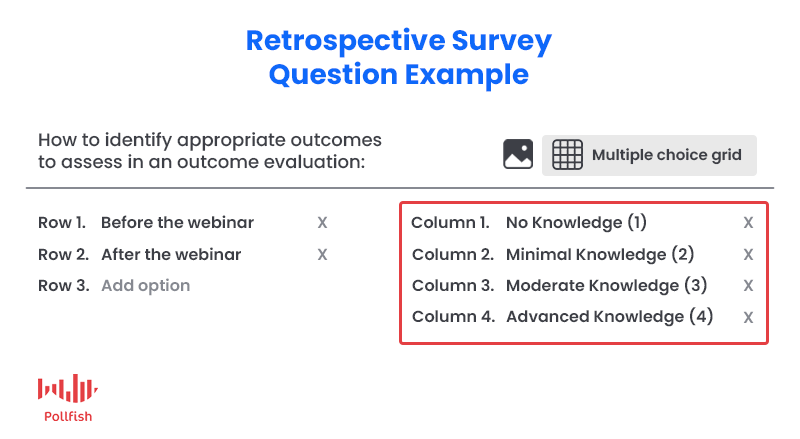
The following includes a few examples of retrospective studies. Surveys can be applied to all cases as part of the research process.
- A group of investigators study the records of factory workers from two decades ago. Their studies include retrospective surveys that question these workers’ health, well-being and exposure to a certain radiation, including its source of emanation. This would unearth whether there is a link between exposure to the radiation and certain health detriments.
- A researcher who wishes to learn about the origins of stomach cancer will interview a cohort of people who already have the disease. The study will involve asking the group about their medical history, lifestyle choices, family health history and habits to find the causes of the disease. The people with certain lifestyles may be compared with those of contrasting ones.
- A business owner seeks to discover why a segment of their target market is only interested in one offering of the company. This segment may be filled with loyal customers who predominantly shop from this business. As such, the business owner can conduct an investigation into past shopping experiences, purchases, habits, diversions and interests of the target subjects in the study. The business owner can then use those findings to see which and if any changes in certain aspects of life have contributed to this disinterest of offerings and if it can be changed.
The Pros and Cons of Retrospective Studies
Retrospective studies are useful for finding the what, when, where and how. They are thus used to find causal relationships between variables as well. Aside from their utility, these studies, along with their respective surveys have some drawbacks
The Pros
- These studies offer many insights: surveillance, evaluation, causation and impact of different variables within subjects.
- Looking at factors before the onset of a disease/occurrence can help assess the effects of rare or unusual factors, as researchers can identify a number of subjects who have them.
- These surveys can help determine if prospective studies are necessary to later carry out.
- They are among the fastest studies to conduct, along with cross-sectional studies.
- They are inexpensive, especially when compared to long-term longitudinal studies.
- Traditionally used in medicine and psychology, they also offer a creative way to understand the mindset and behaviors of consumers.
- There is no risk of loss of follow-up.
The Cons
- They are prone to recall bias, an incorrect remembrance which skews the accuracy of the study’s results.
- They are prone to misclassification bias, a systematic error that can crop up when a subject is assigned to a wrong category of identification.
- There is less evidence than that which exists from prospective studies.
- Since controls are usually recruited via convenience sampling, they don’t represent the general population.
- Time-related relationships may be difficult to evaluate.
The Utilitarian Nature of Retrospective Surveys
Although they are fast and relatively inexpensive, these studies can be difficult to conduct for a number of reasons. But their disadvantages shouldn't sway you from charting these market research waters.
That is because you can avoid errors with surveys. Online surveys in particular grant you fast access to the behaviors and minds of your target market or subject of interest. For example, to weed out misclassification, you can conduct further surveys into your target market segments to better understand which kind of respondents fall under which categories.
All in all, you can take part in this kind of research due to the ever-utilitarian nature of online surveys.
Frequently asked questions
What is a retrospective survey?
In contrast to survey research that examines events in the present, retrospective surveys are conducted to examine events or occurrences that happened in the past.
What are some disadvantages of retrospective studies?
Some of the problems with retrospective studies are that they are subject to recall bias, prone to misclassification bias, may suffer from inaccuracies due to sampling bias, and don’t always provide sufficient evidence to draw strong conclusions.
What other terms are used to describe retrospective studies?
Retrospective studies may also be referred to as historical research. Retrospective studies are a type of cohort study, which is used to determine how often a phenomenon occurs within the studied population.
What is the purpose of a retrospective study?
A retrospective study is conducted to understand how and why certain events, feelings, attitudes, or behaviors have developed.
What are some advantages of retrospective studies?
Retrospective studies are able to examine a wide variety of variables, understand factors that occurred before an event or onset of a phenomenon, and offer an interesting way to understand the feelings and attitudes of the studied population. They are also fast, inexpensive, and relatively easy to conduct.
What are some disadvantages of retrospective studies?
Some of the problems with retrospective studies are that they are subject to recall bias, prone to misclassification bias, may suffer from inaccuracies due to sampling bias, and don’t always provide sufficient evidence to draw strong conclusions.











